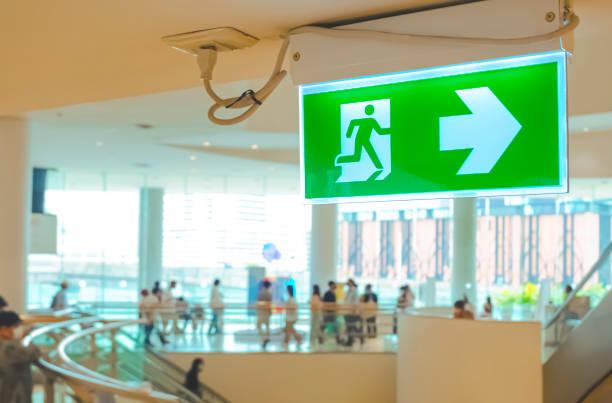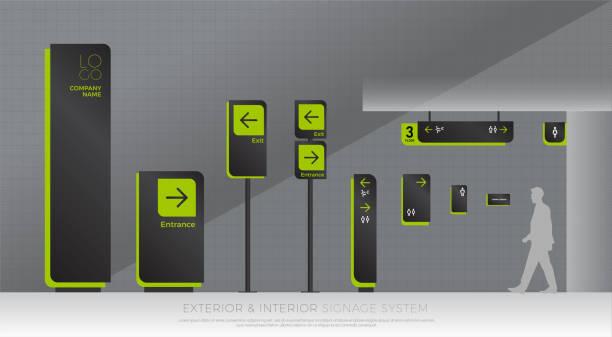Can we speak about how hard it is to be in a hospital? Even when you're simply going in for a standard checkup, there's this underlying dread that comes with the entire thing. And you know what makes it even worse? Being absolutely lost attempting to locate where you're meant to be.
I spent twenty minutes seeking for the radiology department at a hospital that had three buildings that looked exactly the same and were all linked by skywalks. I was already worried about the scan, and by the time I eventually located the correct spot, I was sweating, agitated, and quite angry.
That's why hospitals need more than simply a fancy tech improvement for interior navigation. For folks who are already struggling with a lot, they really do change their lives.
Why Hospitals Are Hard to Find
Here's the problem with hospitals: they are built for medical efficiency, not easy travel. They expand naturally throughout the years, with additional towers and wings added here and there and restorations that change the layout of halls. The ultimate result is a labyrinth that makes sense to the people who work there every day but is completely confusing to everyone else.
Lines on the floor that are different colors? In principle, it's great, but then you remember that you have to follow the blue line, then switch to the green line at the second junction. If you're heading to the newer portion of the building, however, you should disregard the green line and search for signs. Yes. Not useful when you're already anxious.
And don't even get me started on how hard it is to explain how to use such systems to older folks or individuals who don't speak English well. It will cause confusion and missed appointments.
Enter the Hospital Wayfinder
This is when contemporary navigation technology comes in handy. A hospital wayfinder is an interior navigation tool made especially for hospitals. It performs what static signage and floor maps can't: it tells you precisely where to go and how to get there in real time.
It's like Google Maps, but for the hospital. You open the app on your phone (or use a kiosk in the lobby), type in where you want to go, and bam! You get step-by-step instructions. Your location changes as you move. It will recalculate if you go the incorrect way. No judgment. Don't worry.
Just easy-to-understand advice when you need it the most.
The Technology That Makes It Work
Okay, a short side note on how this works, since it's very neat.
Wi-Fi, Bluetooth beacons, and occasionally even the Earth's magnetic field are all used by these systems to find your exact position within the building. Your phone turns into a very precise tracker that can tell what level you're on, what hallway you're on, and even what side of the hallway you're going on.
After that, the app puts this information about where you are on a digital map of the hospital. You may see a little dot (that's you!) and a line outlining the path you need to go. Some systems even employ augmented reality, which lets you see virtual arrows on the real floor in front of you when you hold up your phone.
When you first use it, it's honestly a little miraculous.
Why This Is More Important Than You Think
Indoor navigation systems do more than simply save individuals from getting lost (which is already a big deal). They also have a ripple effect that helps the whole hospital.
Patients are less stressed. When you're not constantly checking your watch to see whether you're going to make your appointment, you show up calmer. Patients who are calmer are simpler to treat, more willing to help, and have better health results. This isn't simply wishful thinking; there is real science that backs it up.
Appointments start on time. The entire timetable runs more smoothly when fewer individuals are late because they couldn't locate the correct department. This makes the personnel happy, cuts down on the time other patients have to wait, and helps the whole place run more smoothly.
Staff may concentrate on real care. Do you remember all those times when someone came to the nurses' station and asked for directions? Those numbers fall substantially down when folks can use their phones to go about on their own. Nurses take care of patients. Doctors perform their jobs. Everyone is doing what they were instructed to do.

The Accessibility Game-Changer
This is where I get very excited: indoor navigation solutions are life-changing for those with impairments.
Voice-guided instructions make it feasible for those with visual problems to go about on their own, which is almost impossible with regular signs. Routing that is wheelchair-accessible makes sure that users don't end up on stairs or in tight spaces. People who don't speak English aren't at a disadvantage since there are language possibilities.
My aunt is in a wheelchair, and she told me about attempting to get a specialized appointment at a hospital she'd never gone to before. The directory said that the office was on the third level. It didn't inform her that the elevator was around two corners and down a corridor she would never have located on her own. She had to approach five different individuals for assistance and was fifteen minutes late, tired, and ashamed.
A hospital wayfinder would have pointed her to the precise location of the elevator. One app. No problems.
How to Make It Work in Real Life
The best ways to use these technologies work with the hospital's current infrastructure. Some of them connect directly to scheduling systems, so when you make an appointment, directions to get there instantly show up on your patient portal or are sent to you via text the day before.
Others provide features like estimated walking durations (which are really important if you have trouble moving about or have a kid with you), sites of interest (where's the next toilet or café?), and real-time alerts regarding temporary closures or construction diversions.
The best hospitals also teach their personnel to tell patients about the guidance app. If no one knows about your indoor navigation system, it doesn't matter how good it is. A simple "Oh, you can use our wayfinding app to get there!" goes a long way.
The human element is still important.
One more thing: technology can't take the place of compassion. There will always be those who can't or won't use an app, require someone to take them to their destination, or simply want to talk to a real person for support.
And that's OK. The point of hospital wayfinders isn't to stop patients from talking to each other; it's to offer them choices. Some individuals like how digital navigation lets them do things on their own and quickly. Some people would rather ask for instructions. Both are true.
The finest hospitals use technology while yet preserving the human touch. At the end of the day, healthcare is ultimately about taking care of people. Indoor navigation solutions help such persons access the treatment they need more easily.
And to be honest? That's something to be happy about.

Join our community to interact with posts!